'Shi Jing' nature trail brings 2,500-year-old botanical heritage to life
From: Original
Shenzhen's parks are renowned for their unique charm and beauty. Xiangmi Park is known for its refreshing atmosphere and vibrant roses, while Lianhua Hill Park features large kite squares, an annual Bougainvillea show and outdoor coffee festivals. Honghu Park is famous for its lotus blossoms, and Renmin Park is celebrated for its annual rose displays. The Dasha River Ecological Corridor shimmers with clear waters, while Shenzhen Talent Park exudes a modern and stylish vibe.
The Shenzhen International Garden and Flower Expo Park, one of the oldest parks of the city, stands out for its cultural richness and plant diversity.
Ornaments in the Shenzhen International Garden and Flower Expo Park creates a traditional cultural vibe. Photos by Liu Minxia
Recently, the park introduced a 2.7-kilometer-long "Shi Jing Exploration Nature Study Route," which connects 23 plants mentioned in "Shi Jing" (the Book of Songs), one of China's oldest collections of poetry.
This innovative trail, dubbed the "Shi Jing Trail," features both rare and everyday plants such as wolf tail grass and lotus, all of which are referenced in the "Shi Jing," offering visitors a chance to explore both nature and classical Chinese literature in a single journey.
The park has created a map of the trail, marking the locations of these plants within the park to help visitors easily locate and identify their modern counterparts.
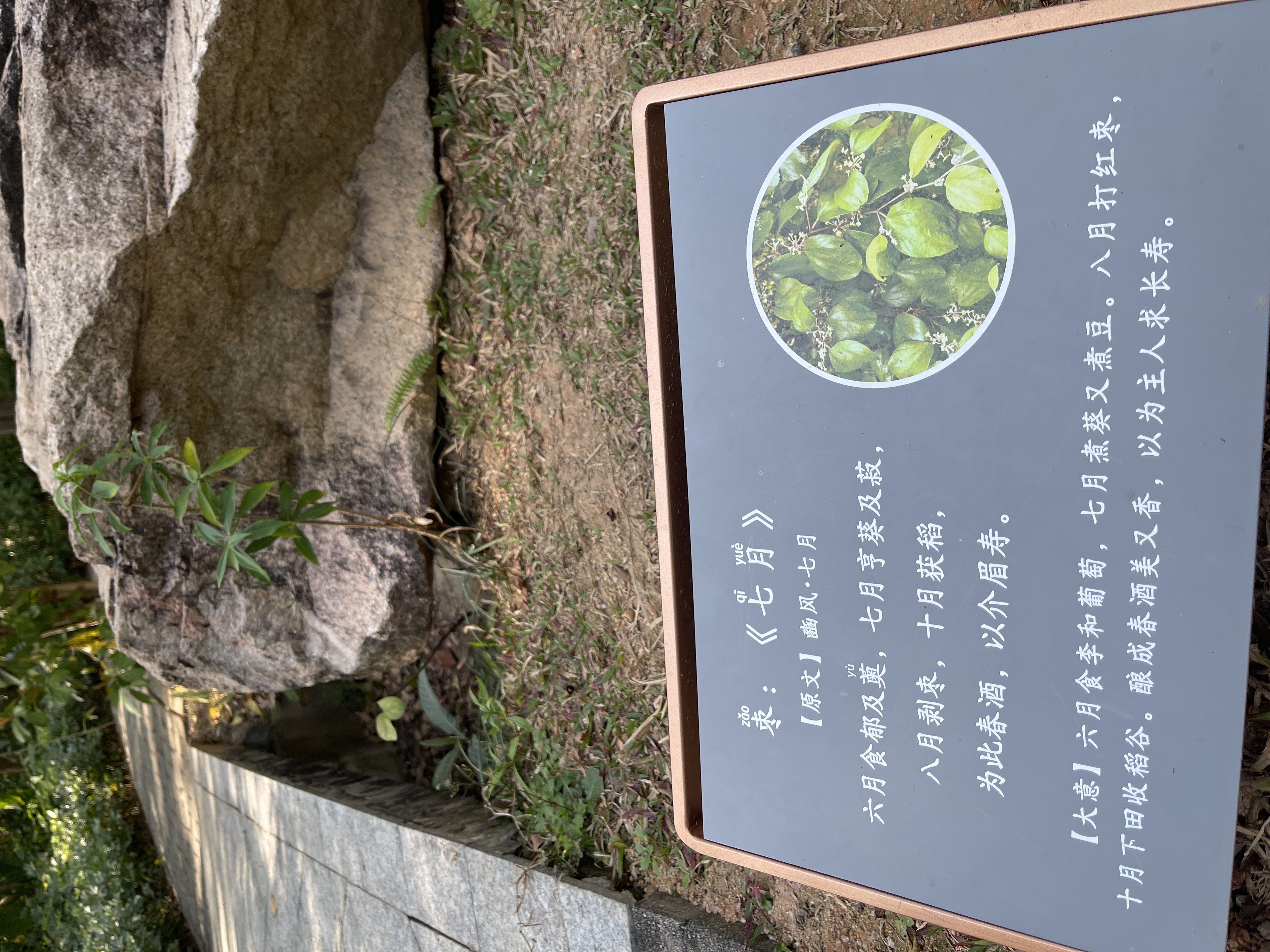
A sign features an explanatory text about date trees, with a date tree in the background.
These plants were carefully selected from over 700 species provided by the park's plant experts. Each plant is accompanied by explanatory texts from the "Book of Songs," displayed next to the corresponding plant to allow visitors to appreciate both nature and the charm of classical poetry. For example, the xingcai (water mallow) is accompanied by the line "参差荇菜,左右流之" (Uneven water mallow, swaying left and right), while the xuancao (daylily) is paired with "焉得谖草,言树之背" (Where can I find daylilies to plant behind my house?).
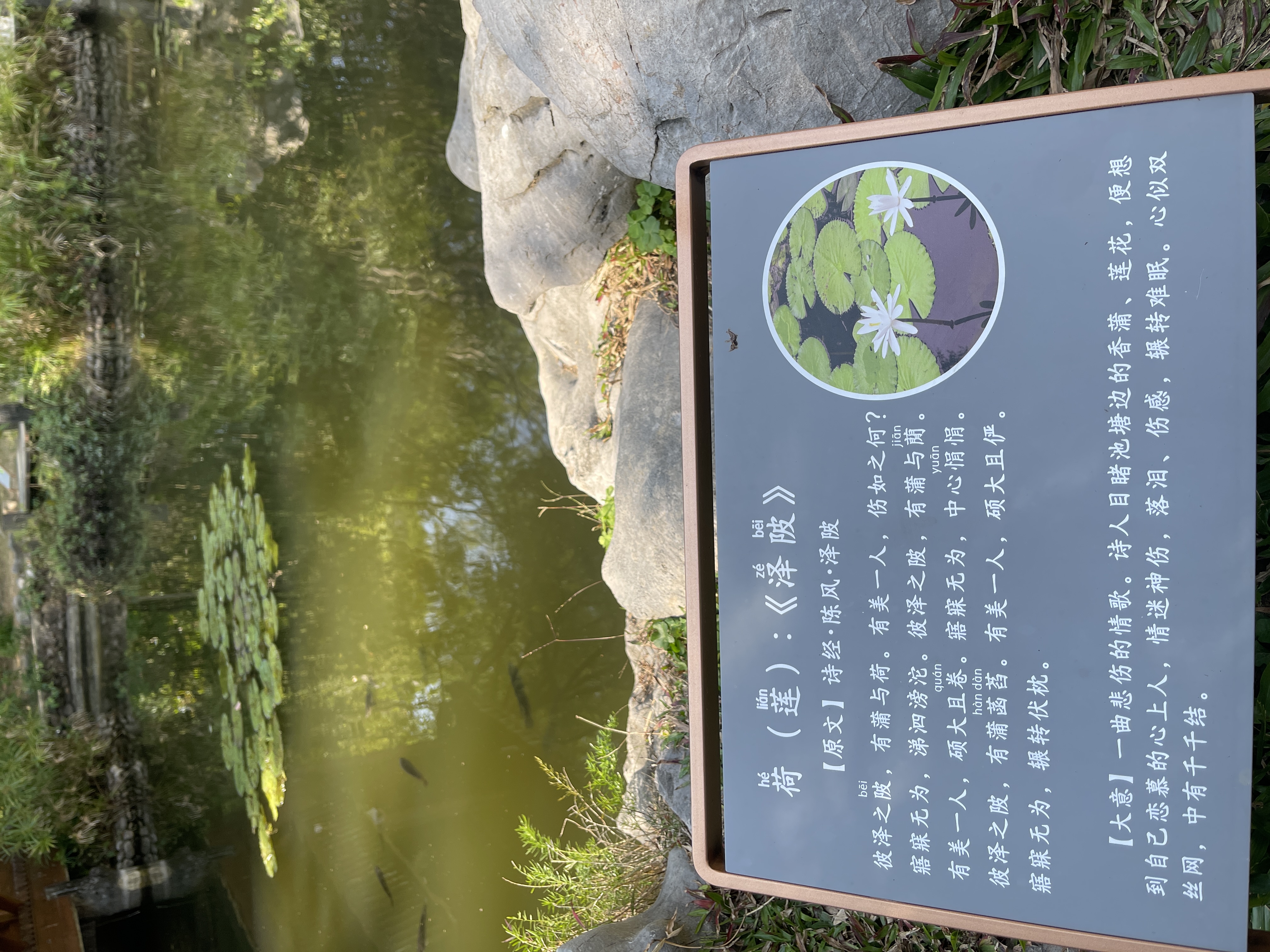
A sign features an explanatory text about lotus, with lotus plants in the background.
The park has also installed a series of informational boards about these plants, including their names, characteristics, and habits. Key verses from the "Book of Songs" related to each plant are also included, creating an immersive experience that combines classical poetry with modern botanical knowledge.
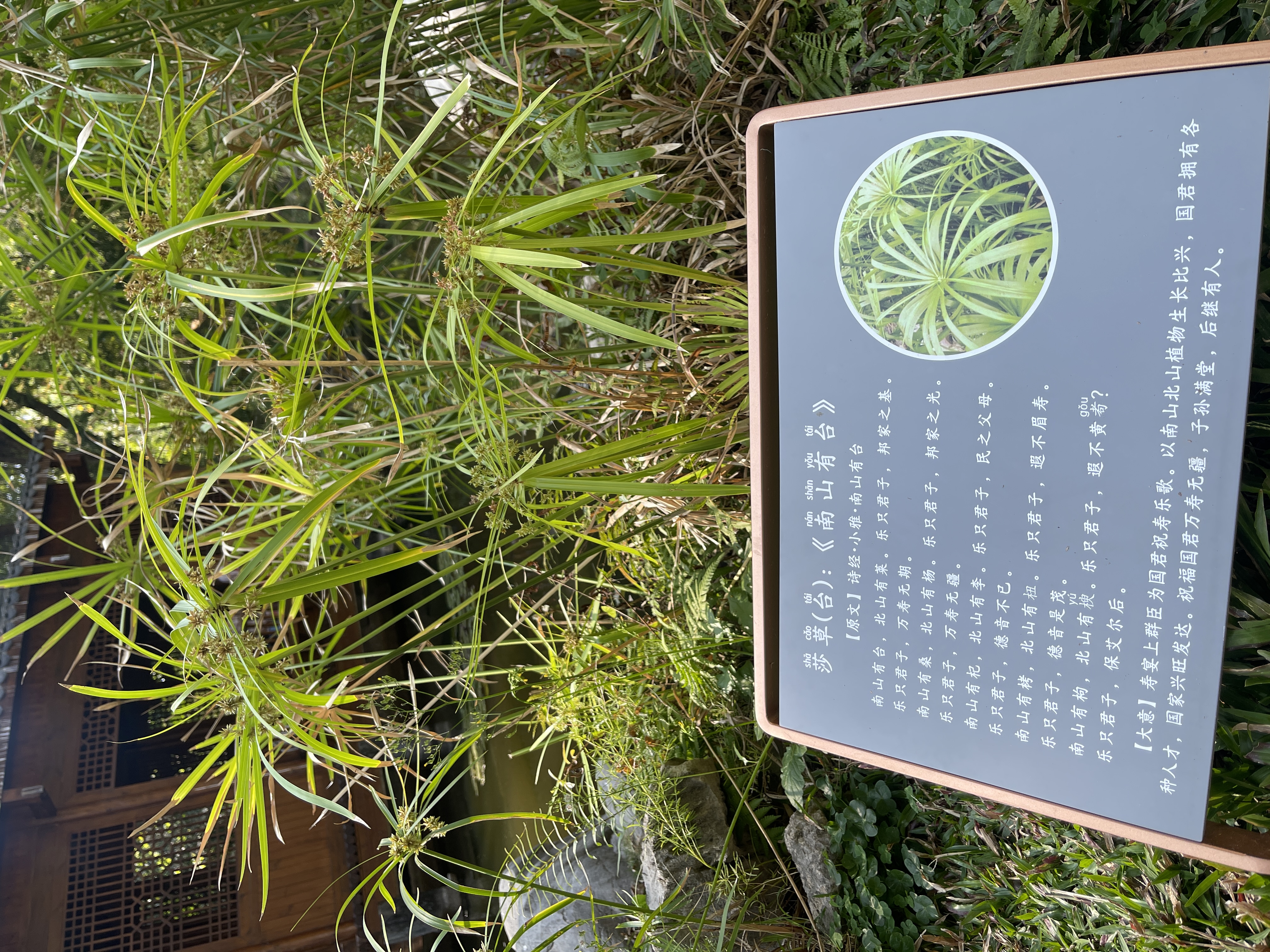
A sign features an explanatory text about nutgrass flatsedge, with nutgrass flatsedge plants in the background.
To make the experience more accessible, the boards feature phonetic annotations for the many rare characters found in the "Book of Songs," ensuring that visitors of all ages and backgrounds can easily read and understand the texts.
The "Book of Songs" is the earliest collection of Chinese poetry, dating back to the Western Zhou Dynasty (1046 B.C.-771 B.C.) and the Spring and Autumn Period (770 B.C.-476 B.C.). It contains 305 poems, with 144 of them mentioning various plants.
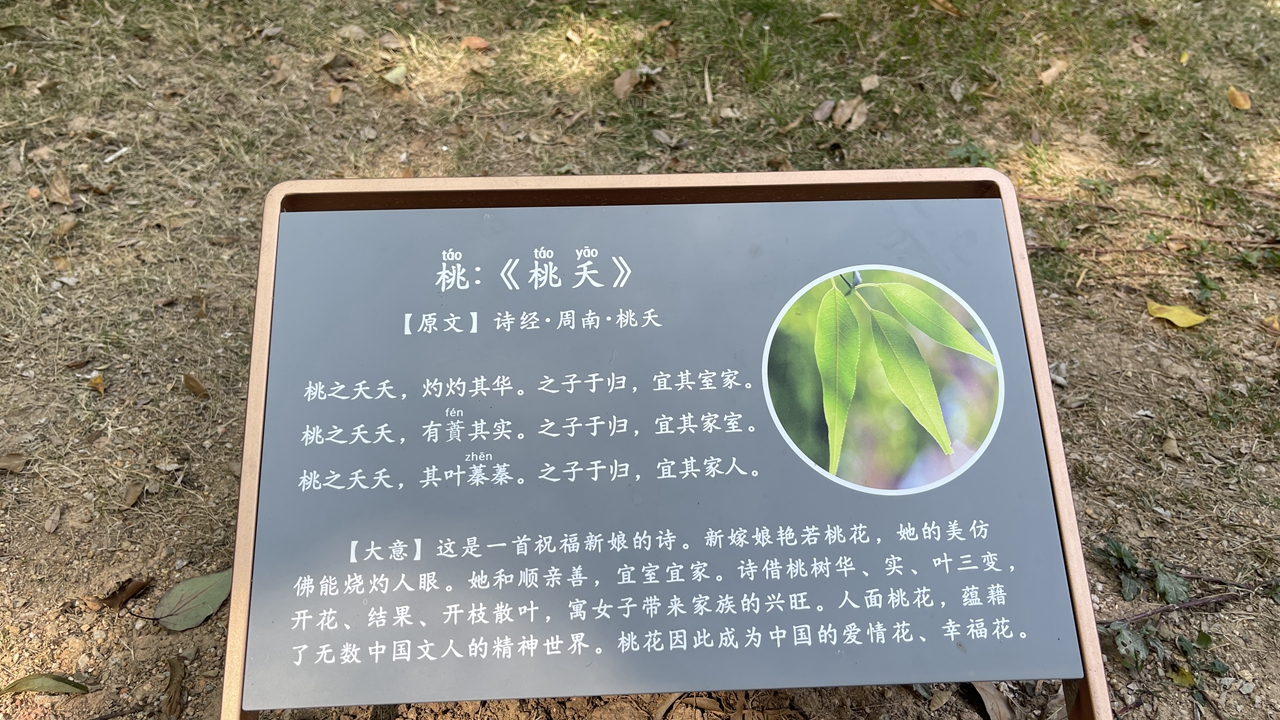
A sign features an explanatory text about peach trees.
These plants are not only botanical references but also carry deep cultural and symbolic meanings. For example, the water mallow (Xing Cai) is mentioned in the poem "Guan Ju" from the "Book of Songs." It is a symbol of purity and harmony, often found in clear waters. Another notable plant is the daylily (Xuan Cao), which represents the love for mothers, as seen in the poem "Bo Xi" from the "Wei Feng" section.
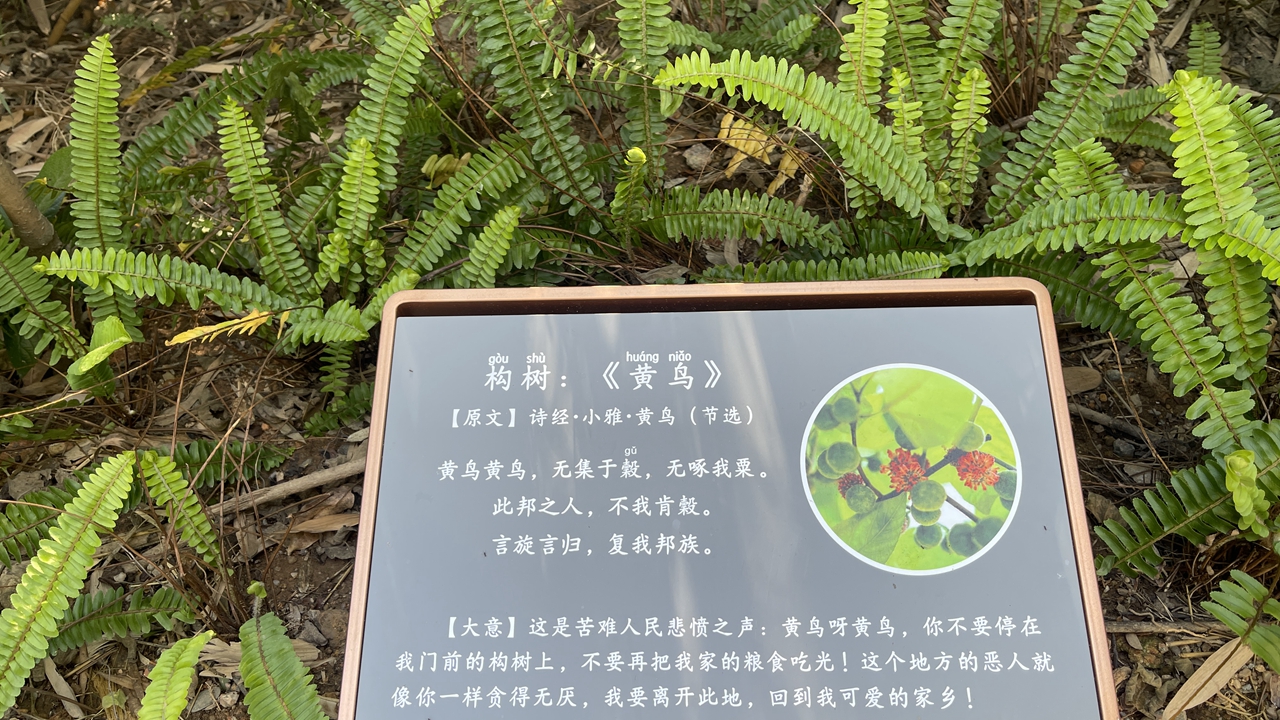
A sign features an explanatory text about paper mulberry.
The "Book of Songs" is more than just a collection of poems; it is a window into the lives, customs, and natural environment of ancient China. The plants mentioned in the collection reflect the close relationship between the ancient people and nature, and their appreciation for the beauty and utility of the natural world. The Shenzhen International Garden and Flower Expo Park's initiative to create a "Book of Songs"-themed trail is hailed by local residents as a wonderful way to reconnect modern visitors with this ancient heritage, allowing them to experience the timeless charm of classical poetry through the lens of nature. Some local schools have organized themed tours of the trail to explore both the natural and cultural aspects of these ancient plants, allowing students to gain a deeper understanding of the "Book of Songs" and the rich botanical heritage it represents.
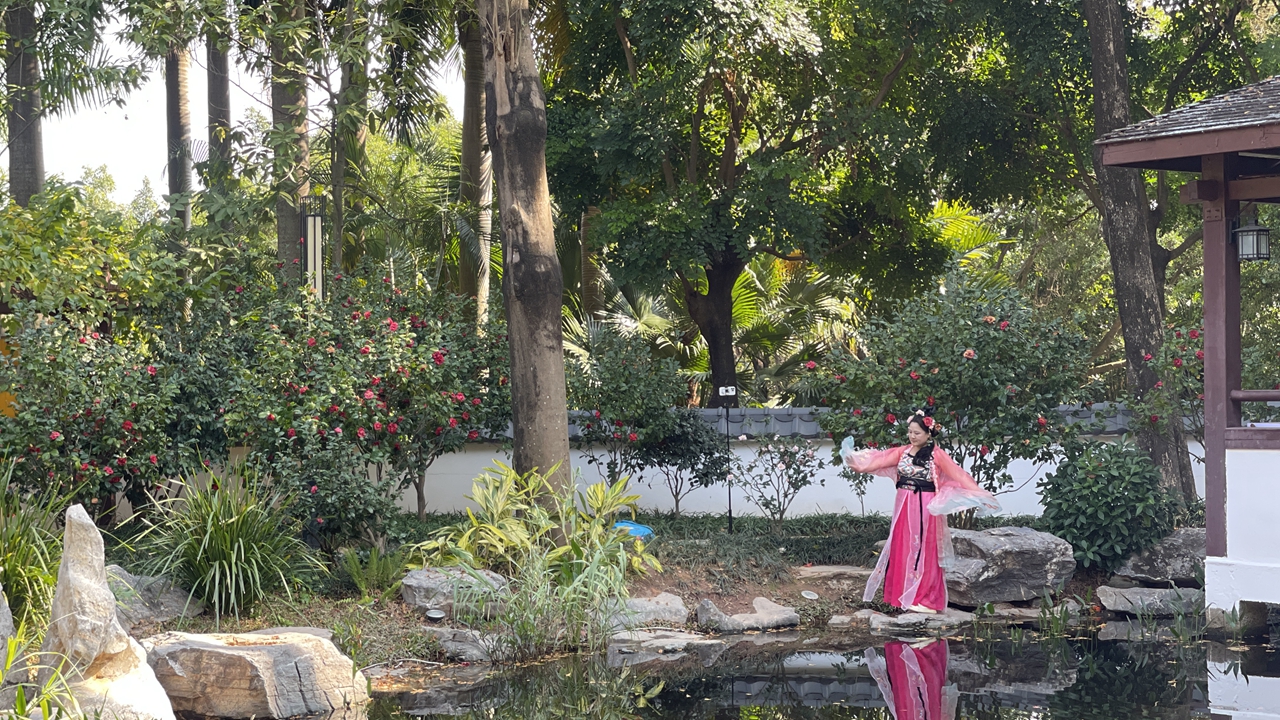
A woman in traditional Chinese attire dance between the plants in the park.
Venue: South Area, Shenzhen International Garden and Flower Expo Park, Futian District (福田区园博园)
Metro: Line 1, Qiaocheng East Station (侨城东站), Exit A